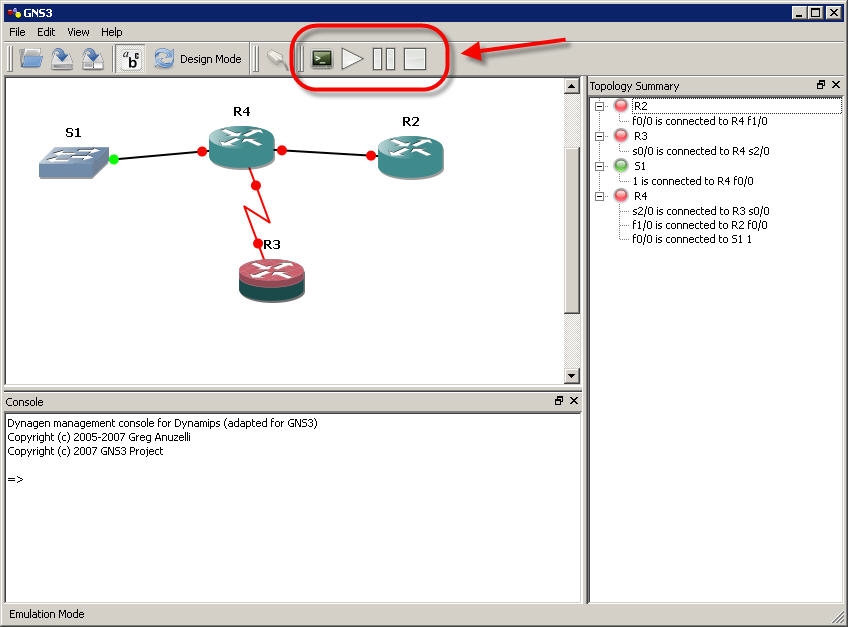

- #Cisco router ios for gns3 software
- #Cisco router ios for gns3 password
- #Cisco router ios for gns3 free
#Cisco router ios for gns3 software
It's important to realize that on older platforms such as those supported on GNS3, the most recent software available could be three or four years old. An easy way to get the software is to purchase one of the supported routers, making sure that the router you purchase has the most recent version of the software, such as 12.3 or 12.4. You have to provide the router software, but GNS3 itself is free.
#Cisco router ios for gns3 free
Are you familiar with GNS3 ( It's a free router emulator platform which is used by millions of people to learn and test Cisco IOS commands. I used to own six 1720s and found them excellent for learning, experimenting, and teaching. In the meantime, I just received an email from a reader asking about using a Cisco 1720 router to learn IOS commands and thought I'd share my response here. I'm hoping to finish both of them by the end of January and then I can get back to blogging.
#Cisco router ios for gns3 password
Router(config)# service password-encryptionĪnother notice is that we can’t login to a Cisco router via telnet if we don’t set a vty line password for it.I've been absent from this blog for a while, because I'm working on completing two more books in the Accidental Administrator series. We can encrypt all the passwords with the service password-encryption command in global configuration mode Notice these passwords are not encrypted and we can see them with the “show running-config” command. By using the command line vty 0 4, the configuration below will be applied to all 5 sessions (line 0 to line 4). Set vty (virtual terminal lines) password:īy default, a Cisco router supports 5 simultaneous telnet sessions. We can also set the password for console and vty (telnet) login with these commands: The enable secret command will encrypt the password so no one can see the password with the show running-config command. The two commands cannot be in effect simultaneously. So notice that if you configure the enable secret command, it takes precedence over the enable password command. Now type digitaltutSecret and we can login! (make sure you capitalize the letter S). First, try the password digitaltut again the router will not accept this password anymore. Now try to log in the privileged mode again (type enable in the user mode). Router(config)# enable secret digitaltutSecret (notice the letter “S” is capital) To do it, in the privileged mode type the following commands: In fact, most of the administrators use the “enable secret” command nowadays. This is a thing we don’t want as our router is not secured completely. Router# show running-config (or show run) It means if someone types show running-config on our router, they can see our password. Notice that we with the “enable password” command, the router will save our password in plain text. Type “digitaltut” as its password here and we can log in to the privileged mode Now we can see the router is asking for a password. Log in the privileged mode with the enable command Now we can test if the password is working. We logged out the router, notice that you will see two lines “Router con0 is now available” and “Press RETURN to get started.” Press Enter to enter the user mode (a line Router> will appear)

Router(config)# enable password digitaltut Router# configure terminal (or type conf t as a shortcut) Wait for a few seconds and now the router will be ready for the configuration. Type n here as we want to configure this router manually. The CLI window will appear, asking “Would you like to enter the initial configuration dialog? :”. Click the Telnet to all IOS button (the black button) to open the Telnet command line interface (CLI). Click the Start button (the green triangle button)ģ. Drag the Router c2600 the place it onto the right-side box,Ģ. Password: ******* (enter that password here)įirst launch the GNS3, for this tutorial I use the IOS but this is a very fundamental lab so you can use any IOS you have.ġ. In this tutorial we will use GNS3 to do a very basic task to secure your routers – apply a password so that users will be asked for this password when try to enter the privileged mode.


 0 kommentar(er)
0 kommentar(er)
